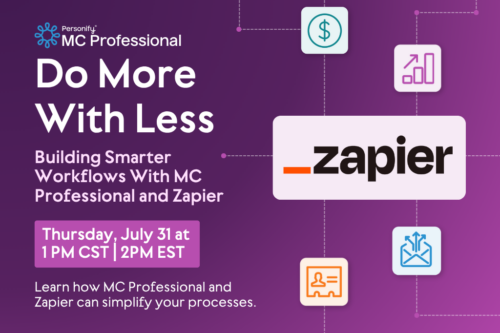While listening in to ASAE’s Small Staff, Big Impact Series, one session topic stood out to us in particular: Building Team Cohesion Across Multiple Locations. It’s no secret that it’s becoming more and more difficult to create connected and collaborative teams with the rise of remote employees.
So, the big question: How do you make your overall staff stronger than ever? Check out these three helpful tips below!
1. Synergizing Your Communication Methods
Whenever you have remote staff members, one of the biggest obstacles usually starts with how you will communicate to one another. In person, it may be easy to casually connect with your coworkers to resolve an issue or brainstorm a new project. However, if you throw distance in the mix, it changes the game.
Ask yourself: What main methods are you using to link up with your virtual coworkers? No matter your industry, there are typically four major channels. Try sticking to this communication hierarchy model:
- Email: For any information that needs to be documented
- Chat messenger: For quick questions (1-on-1 or in a group chat)
- Phone: For longer question / clarifying something 1-on-1 (sometimes, a group)
- Video: For a group discussion (or to go into great detail 1-on-1)
Also, don’t forget about time changes! This little detail always seems to catch folks off guard and can really throw off everyone’s schedule if someone is late or not prepared for it.
2. Picking Up the Extra Legwork
To keep any association running, your remote staff HAS to work as a team, otherwise some key things are going to start falling through the cracks. And this means that you need to be transparent to your coworkers about the professional pain points you run into with remote employees.
One of the best ways to avoid any coworker fallout is to set a roadmap involving all of your staff’s roles, starting by defining where each of you have come from, what you want, and how you will get there. This unified plan will allow for you to set some expectations, identify your pain points, and see how you can collaboratively resolve them.
While it can be easy to pass the buck of your remote issues onto your leadership to solve, it’s key for staff to remember that these issues are arising because your leadership is trying to being flexible to your staff’s needs. It all comes down to your staff recognizing that it’s an exchange of give and take!
3. Balancing Your Office Culture
One of the biggest roadblocks that can happen with teams becoming more remote is the change in your staff’s culture. Before you know it, your team can almost feel grouped into either the office crowd or the virtual crowd. You’ll find your coworkers enticed by remote benefits (working from home, time flexibility, utilities cost covered, etc) while others will look at your office life feeling left out (in-office events, catered lunch, the fun and odd moments that every office brings).
The truth of the matter is that both sides have to see they are still one team with one mission: to serve the members of your association. Once you stop comparing this for that, you’ll find that there will always be pros and cons in every position. Try to start including some staff updates in your monthly office meeting to keep everyone connected in the “know.”
Also, try doing online events that everyone can enjoy! Think about some fun phenomenon you can all do together (March Madness, online personality tests, joint playlist submissions, etc) to allow your employees the chance to engage and build relationships with one another.
It’s no secret that the employee turnover rate in the association space and nonprofit industry is quite high. And though there are a number of reasons for that, one of the biggest factors affecting nonprofit turnover is a poor (or nonexistent) onboarding process. Check out our guide, Best Practices for Onboarding New Staff, to see how you can develop a standard new hire onboarding process!















